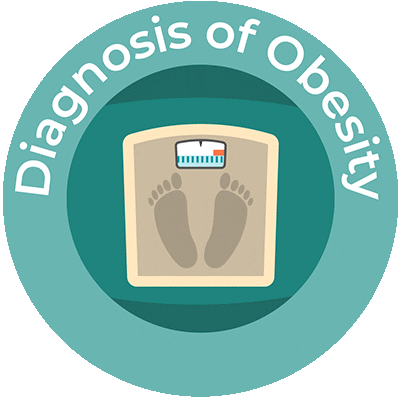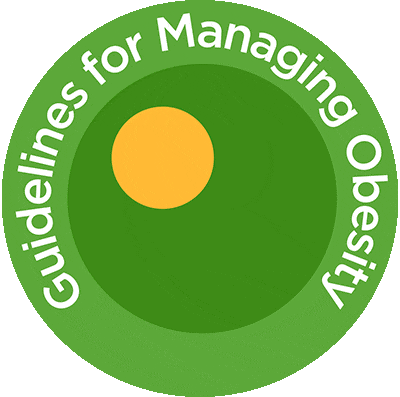Diagnosis of Obesity
Although obesity is still defined based on body mass index (BMI) (Figure 2), that marker is imperfect at best. In 2023, the American Medical Association released a statement noting “numerous concerns” with the way BMI is used to measure body fat and diagnose obesity.5
A study published in 2019 redefined BMI’s threshold by sex and race/ethnicity based on association with metabolic disease, thereby linking the definition of obesity to future prediction of medical morbidity and mortality. The authors used US NHANES data from 1999 to 2016 to estimate the distribution of BMI, as well as 3 metabolic disease risk factors: hypertension, dyslipidemia, and diabetes and determined projected changes in population prevalence if the new thresholds were adopted.
This showed that if obesity were defined by its correlation with the metabolic risk factors, the BMI cutoffs to define obesity would change for specific race/ethnicity and sex subgroups instead of a single BMI (Figure 3).7
In its statement, the AMA recommended that clinicians use a variety of factors in addition to BMI to determine obesity: visceral fat, body adiposity index, body composition, relative fat mass, waist circumference, and genetic and metabolic factors.5
Nonetheless, the most recent guidelines from the American Association of Clinical Endocrinology, the American Heart Association, the American College of Cardiology, and The Obesity Society still recommend BMI as the primary screening tool for obesity.8, 9 However, the guidelines also note that BMI does not indicate the degree to which the weight may be affecting the health of individuals. Thus, clinicians must consider a patient’s individual risk and presence of obesity-related complications when determining if any treatment is necessary.10
When assessing a patient with obesity, clinicians should ask about weight gain and loss history, dietary habits, physical activity, family history of obesity, and other medical conditions or medications that may affect weight. They should then assess the need to lose weight. If weight loss is advised, it is important to assess the patient’s readiness to make change and identify barriers to success, determine weight loss and health goals, and then identify intervention strategies.8
References
- Centers for Disease Control and Prevention. Adult Obesity Facts. Accessed June 26, 2023, https://www.cdc.gov/obesity/data/adult.html
- Abdel-Malek M, Yang L, Miras AD. Pharmacotherapy for chronic obesity management: a look into the future. Intern Emerg Med. 2023;doi:10.1007/s11739-023-03237-4
- Marx J. Cellular warriors at the battle of the bulge. Science. 2003;299(5608):846-9. doi:10.1126/science.299.5608.846
- Authesserre N, et al. Cell Biology Promotion. Accessed June 27, 2023, www.cellbiol.net/ste/alpobesity2.php
- Berg S. AMA: Use of BMI alone is an imperfect clinical measure. Accessed June 25, 2023. https://www.ama-assn.org/delivering-care/public-health/ama-use-bmi-alone-imperfect-clinical-measure
- Centers for Disease Control and Prevention. Defining adult overweight & obesity. Accessed June 27, 2023. https://www.cdc.gov/obesity/basics/adult-defining.html
- Stanford FC, Lee M, Hur C. Race, ethnicity, sex, and obesity: Is it time to personalize the scale? Mayo Clin Proc. 2019;94(2):362-363. doi:10.1016/j.mayocp.2018.10.014
- Jensen MD, Ryan DH, Apovian CM, et al. 2013 AHA/ACC/TOS guideline for the management of overweight and obesity in adults: a report of the American College of Cardiology/American Heart Association Task Force on Practice Guidelines and the Obesity Society. J Am Coll Cardiol. 2014;63:2985-3023.10.1016/j.jacc.2013.11.004
- Garvey WT, Mechanick JI, Brett EM, et al. American Association of Clinical Endocrinologists and American College of Endocrinology comprehensive clinical practice guidelines for medical care of patients with obesity. Endocr Pract. 2016;22 Suppl 3:1-203.
- Apovian CM, Garvey WT, Ryan DH. Challenging obesity: Patient, provider, and expert perspectives on the roles of available and emerging nonsurgical therapies. Obesity (Silver Spring). 2015;23 Suppl 2(0 2):S1-s26. doi:10.1002/oby.21140
- Idrees Z, Cancarevic I, Huang L. FDA-Approved Pharmacotherapy for Weight Loss Over the Last Decade. Cureus. 2022;14(9):e29262. doi:10.7759/cureus.29262
- Drugs.com. Phendimetrazine Tablets Prescribing Information. Accessed June 26, 2023, https://www.drugs.com/pro/phendimetrazine-tablets.html
- Drugs.com. Benzphetamine Prescribing Information. Accessed June 26, 2023, https://www.drugs.com/pro/benzphetamine.html
- Stanford FC, Alfaris N, Gomez G, et al. The utility of weight loss medications after bariatric surgery for weight regain or inadequate weight loss: A multi-center study. Surg Obes Relat Dis. 2017;13(3):491-500.
- SAXENDA (liraglutide) injection for subcutaneous use [prescribing information]. Plainsboro NNNI.
- WEGOVY (semaglutide) injection, for subcutaneous use [prescribing information]. Plainsboro, NJ: Novo Nordisk Inc; 2021.
- Kadouh H, Chedid V, Halawi H, et al. GLP-1 Analog Modulates Appetite, Taste Preference, Gut Hormones, and Regional Body Fat Stores in Adults with Obesity. J Clin Endocrinol Metab.
- Wilding JPH, Batterham RL, Calanna S, et al. Once-Weekly Semaglutide in Adults with Overweight or Obesity. N Engl J Med. 2021;384(11):989-1002. doi:10.1056/NEJMoa2032183
- Wilding JPH, Batterham RL, Calanna S, et al. Once-Weekly Semaglutide in Adults with Overweight or Obesity. N Engl J Med. 2021;384(11):989-1002. doi:10.1056/NEJMoa2032183
- Mehta A, Marso SP, Neeland IJ. Liraglutide for weight management: a critical review of the evidence. Obes Sci Pract. 2017;3(1):3-14. doi:10.1002/osp4.84
- Holst JJ. Incretin-based therapy of metabolic disease. Dan Med J. 2022;70(1)
- Jastreboff AM, Aronne LJ, Ahmad NN, et al. Tirzepatide Once Weekly for the Treatment of Obesity. N Engl J Med. 2022;387(3):205-216. doi:10.1056/NEJMoa2206038
- Rosenstock J, Wysham C, Frías JP, et al. Efficacy and safety of a novel dual GIP and GLP-1 receptor agonist tirzepatide in patients with type 2 diabetes (SURPASS-1): a double-blind, randomised, phase 3 trial. Lancet. 2021;398(10295):143-155. doi:10.1016/s0140-6736(21)01324-6
- Ludvik B, Giorgino F, Jódar E, et al. Once-weekly tirzepatide versus once-daily insulin degludec as add-on to metformin with or without SGLT2 inhibitors in patients with type 2 diabetes (SURPASS-3): a randomised, open-label, parallel-group, phase 3 trial. Lancet. 2021;398(10300):583-598. doi:10.1016/s0140-6736(21)01443-4
- Eisenberg D, Shikora SA, Aarts E, et al. 2022 American Society for Metabolic and Bariatric Surgery (ASMBS) and International Federation for the Surgery of Obesity and Metabolic Disorders (IFSO): Indications for Metabolic and Bariatric Surgery. Surg Obes Relat Dis. 2022;18(12):1345-1356. doi:10.1016/j.soard.2022.08.013
- Balasubaramaniam V, Pouwels S. Remission of Type 2 Diabetes Mellitus (T2DM) after Sleeve Gastrectomy (SG), One-Anastomosis Gastric Bypass (OAGB), and Roux-en-Y Gastric Bypass (RYGB): A Systematic Review. Medicina (Kaunas). 2023;59(5)doi:10.3390/medicina59050985
- Chandrakumar H, Khatun N, Gupta T, Graham-Hill S, Zhyvotovska A, McFarlane SI. The Effects of Bariatric Surgery on Cardiovascular Outcomes and Cardiovascular Mortality: A Systematic Review and Meta-Analysis. Cureus. 2023;15(2):e34723. doi:10.7759/cureus.34723
- O’Brien PE, Hindle A, Brennan L, et al. Long-Term Outcomes After Bariatric Surgery: a Systematic Review and Meta-analysis of Weight Loss at 10 or More Years for All Bariatric Procedures and a Single-Centre Review of 20-Year Outcomes After Adjustable Gastric Banding. Obes Surg. 2019;29(1):3-14. doi:10.1007/s11695-018-3525-0
- Alberga AS, Edache IY, Forhan M, Russell-Mayhew S. Weight bias and health care utilization: a scoping review. Prim Health Care Res Dev. 2019;20:e116. doi:10.1017/s1463423619000227
- Alpert JS. “So, doctor, what’s so bad about being fat?” Combating the obesity epidemic in the United States. Am J Med. 2010;123(1):1-2. doi:10.1016/j.amjmed.2009.05.027
- Magkos F, Fraterrigo G, Yoshino J, et al. Effects of Moderate and Subsequent Progressive Weight Loss on Metabolic Function and Adipose Tissue Biology in Humans with Obesity. Cell Metab. 2016;23(4):591-601. doi:10.1016/j.cmet.2016.02.005
- Bartels RD, Kelly KM, Rothman AJ. Moving beyond the function of the health behaviour: the effect of message frame on behavioural decision-making. Psychol Health. 2010;25(7):821-38. doi:10.1080/08870440902893708
- Rothman AJ, Salovey P. Shaping perceptions to motivate healthy behavior: the role of message framing. Psychol Bull. 1997;121(1):3-19. doi:10.1037/0033-2909.121.1.3
- Campbell MK, DeVellis BM, Strecher VJ, Ammerman AS, DeVellis RF, Sandler RS. Improving dietary behavior: the effectiveness of tailored messages in primary care settings. Am J Public Health. 1994;84(5):783-7. doi:10.2105/ajph.84.5.783
- Jay M, Gillespie C, Schlair S, Sherman S, Kalet A. Physicians’ use of the 5As in counseling obese patients: is the quality of counseling associated with patients’ motivation and intention to lose weight? BMC Health Serv Res. 2010;10:159. doi:10.1186/1472-6963-10-159
- Sarwer DB, Gasoyan H, Bauerle Bass S, Spitzer JC, Soans R, Rubin DJ. Role of weight bias and patient-physician communication in the underutilization of bariatric surgery. Surg Obes Relat Dis. 2021;17(11):1926-1932. doi:10.1016/j.soard.2021.07.013
Gallagher C, Corl A, Dietz WH. Weight Can’t Wait: A Guide to Discussing Obesity and Organizing Treatment in the Primary Care Setting. Obesity (Silver Spring). 2021;29(5):821-824. doi:10.1002/oby.23154










